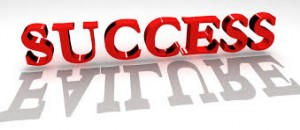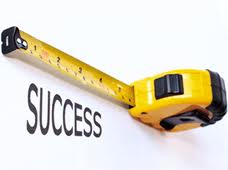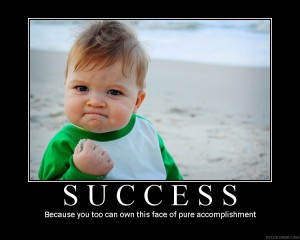by Charles Plant | Feb 28, 2014 | Leadership Development
 Otherwise known as “what got you here won’t get you there” is something interesting to ponder. I think it is taken as given that you have to fail in order to succeed. I’m not sure if anyone will argue with that one.
Otherwise known as “what got you here won’t get you there” is something interesting to ponder. I think it is taken as given that you have to fail in order to succeed. I’m not sure if anyone will argue with that one.
But I’ve been pondering whether success will inevitably end in failure.
Certainly if you look at companies, this is true. Few of the leading firms from a century ago or in fact even 30 years ago are still around and dominant the way they once were. They were victims of their own success, failing because their industry failed or they couldn’t innovate fast enough.
The same can be said of products that were once successful, industries that flourished, even countries that were successful inevitably fail.
Perhaps it is not completely true of people. If you believe the Peter Principle, employees will inevitably be promoted one level beyond their own level of competence and then fail.
There are a very few people though who rise to the top and then retire. They haven’t failed but then they did quit at the top. Products, companies, industries, and countries can’t quit so they all will inevitably fail.
I think the reason that success leads to failure is that people are unwilling to wake up every day thinking that everything they know could be wrong. If you are convinced that you couldn’t be wrong in some way then that is an area in which you are willing to learn.
If you’re unwilling to learn then you won’t progress and this then will lead to failure. The more successful people become, the more they think they know and thus the more they are unwilling to learn and the more likely they will be to fail.
So the happy thought for the weekend for all you successful people out there is: enjoy it now because your own success may be your eventual downfall.
by Charles Plant | Feb 27, 2014 | Leadership Development
 While I’m asking question about success, I guess it is fair to ask questions about failure. It actually may be easier to define success than failure and to know when you’re there.
While I’m asking question about success, I guess it is fair to ask questions about failure. It actually may be easier to define success than failure and to know when you’re there.
If failure is seen as not achieving success then anything other than perfection can be seen as failure. Let’s go back to school for this one. If you get 100 on a course then I think it is safe to say that you’ve succeeded. But have you succeeded if you only get an 80%, or a 60%, or a 50%?
Failure is set at below 50% but then 50% is successful. So I guess failure is as much of a value judgement as success is.
This is why defining success is so important in the workplace. An overachiever will bust her gut to get something perfect and think anything less is failure when “just good enough” is really what you wanted.
On the other hand, a slacker will put no effort in and not even reach “just good enough” and think he has nailed it.
Inevitably the overachiever will burn out and leave feeling they can never do enough and all you’ll be left with is slackers.
And then you’ll really know what failure looks like.
by Charles Plant | Feb 25, 2014 | Leadership Development
 The Olympics were a great chance to watch others succeed (and fail.) If you’re an Olympic athlete, success may be doing the best you can in an event, getting a personal best. But how will an Olympic athlete know that they are there, that they have succeeded?
The Olympics were a great chance to watch others succeed (and fail.) If you’re an Olympic athlete, success may be doing the best you can in an event, getting a personal best. But how will an Olympic athlete know that they are there, that they have succeeded?
- Does just getting to the Olympics define success?
- Is it making the finals?
- Is getting a medal the definition of success?
- Perhaps only getting a gold is being successful.
- What about multiple golds?
- And how about multiple golds at successive Olympics?
You see, it isn’t an easy thing to answer, even with something as straightforward as the Olympics.
Many people at work have no idea what success looks like and those who know what it looks like often have trouble knowing when they’re there.
Imagine playing golf all year, multiple rounds, and never knowing how you’ve done. Or knowing how you’ve done at the end of the year but not knowing what par was or how everyone else has done.
That’s what it’s like for many employees in many companies. It is not enough that you know what success looks like. You better be able to measure it so you know you’re there.
by Charles Plant | Feb 18, 2014 | Leadership Development
 I was chatting with a new acquaintance last week about her job and I asked her a simple question that I now ask almost everyone I talk to. “What does success look like.”
I was chatting with a new acquaintance last week about her job and I asked her a simple question that I now ask almost everyone I talk to. “What does success look like.”
The sad part is that she was unable to answer the question. It’s the same question I asked two other people that week and their reactions were all the same. A bit sheepish, a bit rueful. They all really wanted to know and were a bit sad and embarrassed that they didn’t.
If you don’t know where you’re going, any road will take you there. And that’s what is happening. When companies and people can’t define what success looks like, any bit of random activity and busy work can substitute for success.
So ask yourself the question: What does success look like for you?
by Charles Plant | Feb 14, 2014 | Uncategorized
 I got a Fitbit Force for Christmas from my mother (thanks Mom) and it has had the unfortunate side effect of making me obsessive about how active I am on a daily basis. As a proponent of metrics, I totally get how they can be used to change behaviour but until now, I didn’t realize just how powerful metrics could be.
I got a Fitbit Force for Christmas from my mother (thanks Mom) and it has had the unfortunate side effect of making me obsessive about how active I am on a daily basis. As a proponent of metrics, I totally get how they can be used to change behaviour but until now, I didn’t realize just how powerful metrics could be.
First, for those of you who aren’t part to the latest tech rage of wearable technology, the Fitbit Force measures how many steps you take in a day, the amount of time you are active, your sleep patterns and a few other things. You wear one of their trackers (in my case like a watch) and it uploads your stats onto the web where you can see your results and track all sorts of other things. You can also link in friends who are wearing one and compete with them as well as earn badges (meh.)
Anyway, I stay fairly active running and cycling but I work out of my house so don’t walk around a lot getting to work or at work unless I am at a client’s for the day. Well much to my horror I discovered that I wasn’t reaching the daily goal of 10,000 steps that Fitbit prescribes. Neither was I racking up enough active minutes of flights of stairs. And to top it all off, my kids were more active than me and beating me hands down for top spot.
Well of course, that had to change. I immediately started walking more, even going out for purposeful walks during the day. I extended my runs and started focusing on how I could meet my step objectives for the day. It has even changed how I get around the city. Before I would get in my car to go see a client. Now where possible I walk to the subway and take public transit. (Those of you who know me know what a radical change this is.)
Last weekend I went to a movie on a Saturday night downtown and even took the subway to that so I could get in more steps. Tonight I will be walking to dinner with my Valentine (Happy Valentine’s Day by the way.)
The point of all this is that measuring my activity with the Fibit has changed my behaviour. My proposition in Leadership Development is that you can’t change behaviour or attitudes just by talking to people (and that’s the way most LD programs work.)
No, if you want to change behaviour, you have to define what success is by having measurable objectives. You have to report back regularly on results. You have to change your process just as I did with the Fitbit.
I didn’t start out trying to change my behaviour but those damn Fitbit Metrics managed to change them just by telling me how I was doing all the time.
 Otherwise known as “what got you here won’t get you there” is something interesting to ponder. I think it is taken as given that you have to fail in order to succeed. I’m not sure if anyone will argue with that one.
Otherwise known as “what got you here won’t get you there” is something interesting to ponder. I think it is taken as given that you have to fail in order to succeed. I’m not sure if anyone will argue with that one.



